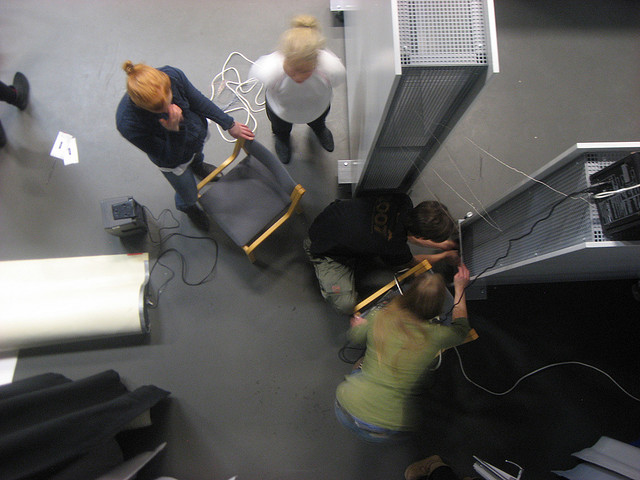Colleges and universities face pressure from government agencies and industry leaders to support collaborative activity on campus. Interdisciplinary teaching and research as a form of collaboration presents an interesting context to explore the strategies and influences for supporting this work. In this post, I want to discuss interdisciplinary activity on campus and how institutions can foster interdisciplinary collaboration in higher education.

A 2004 report by the National Academy of Science defined the most pressing issues and interdisciplinary fields of study awaiting contemporary academics: nanotechnology, genomics and proteomics, bioinformatics, neuroscience, global climate change, conflict, and terrorism (p. 17). Such demands not only presume a wealth of knowledge drawn from across the disciplines, but also collaborative networks of research teams.
Pursuit of innovation in these areas fosters collaboration among academics that previously resided within disciplinary boundaries, rarely venturing out to work with other researchers (Holley, 2009). Furthermore, “no single individual will possess all the knowledge, skills, and techniques required” given the complexity of new areas of inquiry (Katz & Martin, 1997, p. 14).
The shifting paradigm toward interdisciplinary knowledge results not only in a change for individuals, but also in institutional behavior (Holley, 2009). In recent decades, observers of American higher education have noted an increase in organized interdisciplinary activity (Brint, 2005; Feller, 2004; Klein, 1990; Weingart & Stehr, 2000).
Such activity is frequently motivated by external demands from policymakers, funding agencies, and industry partners with the goal of producing knowledge that crosses disciplinary boundaries. For example, a 2006 report by the National Institutes of Health affirmed the agency’s commitment to lowering the “artificial organizational barriers” of the disciplines. According to the NIH, these traditional borders may in some cases “impede the pace of scientific discovery” (NIH, 2006).
Organizational strategies to foster interdisciplinary activity in higher education largely concentrate on structural barriers that traditionally divide the institution.
Interdisciplinary strategies include campus-wide initiatives, new buildings for interdisciplinary use, research centers and institutes, seed funds for collaborative research projects, and faculty hiring policies, such as cluster hires or joint hiring procedures (Sa, 2007). Other approaches give a greater focus on the institutional culture—fostering a campus climate supportive of collaborative learning and research, providing faculty incentives such as tenure and promotion policies, and utilizing strategic plans to reinforce support of interdisciplinary activity (NAS, 2004).
Interdisciplinary activity serves an increasingly significant role in the practices of American research universities. A central policy question for institutional leaders rests in how to encourage a supportive culture to complement collaborative priorities and goals.
Almost all of the research universities demonstrate evidence of behavior responsive to broader social influences in support of interdisciplinary activity. Moreover, beliefs regarding the centrality of interdisciplinarity and collaboration for research universities can serve as a critical driver of institutional rhetoric and activity.
In order to compete for significant federal grants as an example, universities create institutional strategies in support of interdisciplinary collaboration as necessary. Institutions respond to pressures to solve complex problems coupled with a value system in support of collaboration as major research universities.
Many of the formal activities and strategies universities employ such as breaking down administrative barriers or cluster hiring policies are reflective of these values.
By establishing a commitment to collaboration, university leaders can enable organizational networks to mobilize support and overcome well-known barriers to sustaining collaboration.

